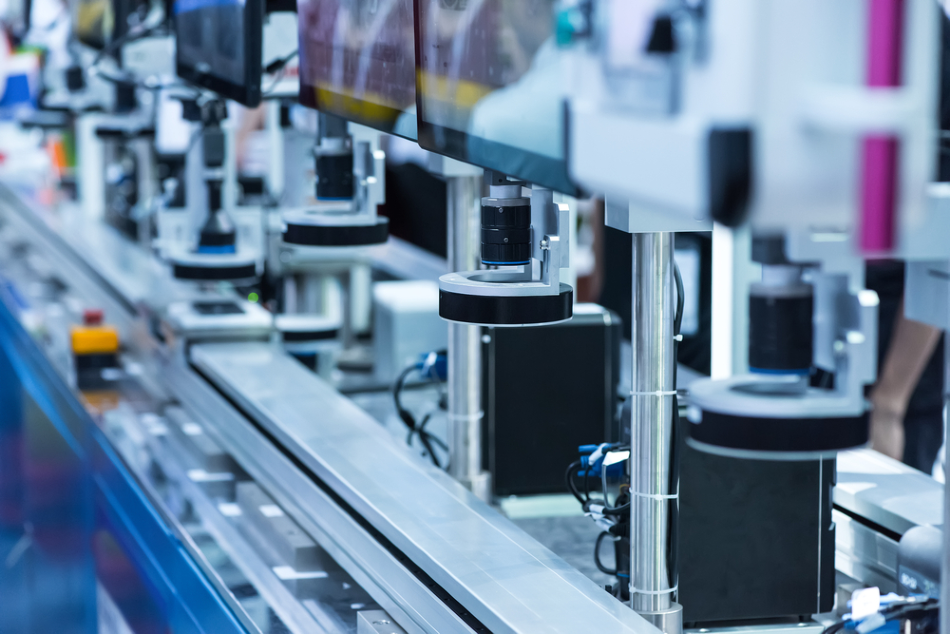
Image Credit: asharkyu/Shutterstock.com
Vision technology is rapidly evolving. This is having a significant impact on several sectors, including the industrial market, which is benefiting greatly from increasingly improved image sensors that are optimizing the sector’s automation systems.
The rapid technological advances in the image sensing field have helped to increase technology in embedded systems. This has led to a progression in ultra-high-speed imaging systems for governing automation, as well as for machine vision and motion analysis that enables this technology.
The improvements in image sensors are continuing to enhance the performance of industrial automation, mostly due to the higher resolutions that are being made available.
Image sensors are the foundation of modern automation, with the data captured through image sensors feeding machine vision technology. The data is run through image-recognition algorithms to identify objects in the field of vision to enable automation by allowing for the fine-grain, real-time coordination of target objects.
Currently, many significant advances are being made in image sensors that are not only improving the use of image sensors in current applications within the field of industrial automation, but they are also opening avenues for new applications for the sensors.
Applications of Image Sensors are Growing Automation in the Industrial Sector
New image sensor technology has improved the frame rate available to cameras used to facilitate industrial automation. This higher frame rate has led to enhanced image quality, which is enhancing the use of these cameras in automation applications such as inspection.
New technology is also providing higher resolutions, as modern image sensors have higher pixel densities compared to older models. This is also making the role of image sensors in automated visual inspection more effective.
Companies can carry out visual inspections much faster and more accurately, resulting in quality control processes being less costly and time consuming.
Image sensors are being used to automate tasks that would have once been allocated to human workers. For example, simple assembly tasks, and when the technology improves further, complex tasks will be possible.
Specific industries are significantly benefiting from these advancements, particularly the automotive industry.
Large numbers of skilled human workers were once needed for time-consuming assembly tasks. This responsibility has mostly been passed onto robots who use data captured by image sensors to inform their movement and provide feedback on their performance. This allows them to adjust their actions and maintain a level of accuracy that cannot be achieved with a human workforce due to fatigue.
This is enabling the industry, mainly manufacturers and automotive companies, to produce high volumes of product in shorter periods and at lower costs. Overall, this makes them more profitable.
Testing is another primary application of image sensors in the field of industrial automation. Prototypes and finished products require a certain level of testing, which is a time consuming and difficult task for human workers.
It is also not immune to error when using human workers, which can lead to mistakes that are expensive to fix. Using image sensors is a way of automating the testing process, speeding it up, while eliminating the flaw of human error.
It also ensures that all products are tested precisely in the way that is required. Image sensors can also check products in fine-grain detail, which is not possible with other methods.
Image sensors also help calibration. Image data collected by the sensors is used to generate feedback on how machines are working. Manufacturing automation is often required to be monitored and calibrated manually. With image sensors, these machines can be operated automatically.
Image sensors are also automating monotonous tasks such as sorting and counting. Many industries require products or parts to be accurately sorted and counted. This may be to bundle items ready for selling, or for sorting through objects, such as food items, to pick out and discard products in the production line which fail to meet quality standards.
References and Further Reading
Disclaimer: The views expressed here are those of the author expressed in their private capacity and do not necessarily represent the views of AZoM.com Limited T/A AZoNetwork the owner and operator of this website. This disclaimer forms part of the Terms and conditions of use of this website.